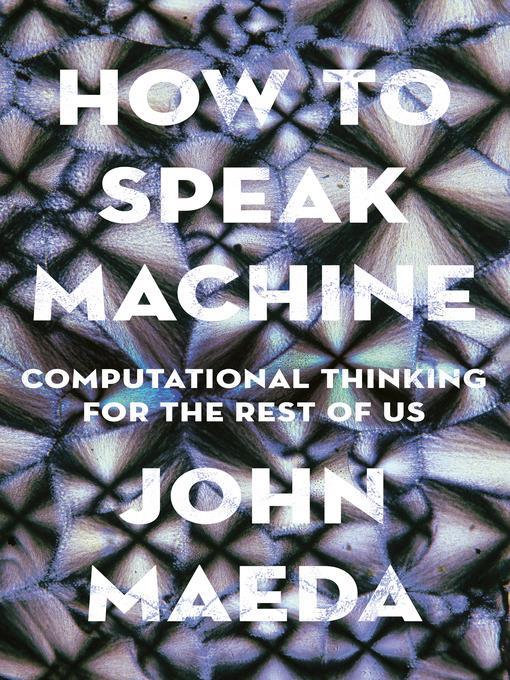
How to Speak Machine
Computational Thinking for the Rest of Us
کتاب های مرتبط
- اطلاعات
- نقد و بررسی
- دیدگاه کاربران
نقد و بررسی

October 14, 2019
Reminiscing on a 30-year career in technology and art, Maeda (Redesigning Leadership), former president of the Rhode Island School of Design, offers some worthwhile but scattered insights into navigating the digital age. To explain how to “speak machine,” he uses classic mathematical graphics to illustrate computing’s finer points; for instance, the Koch snowflakes are used to explain that “computation has a unique affinity for infinity, and for things that can be let to continue forever.” To show “what digital consciousness can feel like,” he describes his 1993 Kyoto art installation where people in a disco club posed as computer parts. Maeda chatters nostalgically about his first computer (an Apple II), the basic programs he wrote while in high school to help his parents manage their tofu shop in Seattle, and about attending MIT in the mid-1980s. He refers critically, but only glancingly, to the “despots and other power mongers” who would use social media “to impact millions of minds... with just a few destructive keystrokes.” Perhaps most affectingly, he envisions a future populated by countless numbers of computers in windowless high-rises becoming “better collaborators with each other than we ourselves could ever be.” Given Maeda’s vast experience, readers may wish his fitfully intriguing ramble had more thoroughly anatomized the grim future he envisions.

October 15, 2019
Maeda (Redesigning Leadership, 2012; Laws of Simplicity, 2006) shares his thoughts on the rules of machines and their algorithms in our lives. He briefly traces the histories of the computer and human-machine interactions, offering anecdotes from his experience working at MIT, visiting Japan, or interacting with his family. Focusing on the role that design can play in computation, Maeda also explores the evolving languages of machines. He cautions readers about the algorithmic biases and exclusions perpetuated by these programs and the tech industry and recognizes organizations and individuals who are adopting inclusive approaches for diversity in the workplace. Those unfamiliar with technical terms and programming concepts in AI and machine learning may take time to process this book, but Maeda's simplified analogies, diagrams, and illustrations help visualize his core arguments. Readers interested in computation, design, AI, and technology will find this book and the intricate computational design concepts it presents to be deeply engrossing and promising as the world embraces AI.(Reprinted with permission of Booklist, copyright 2019, American Library Association.)

























دیدگاه کاربران